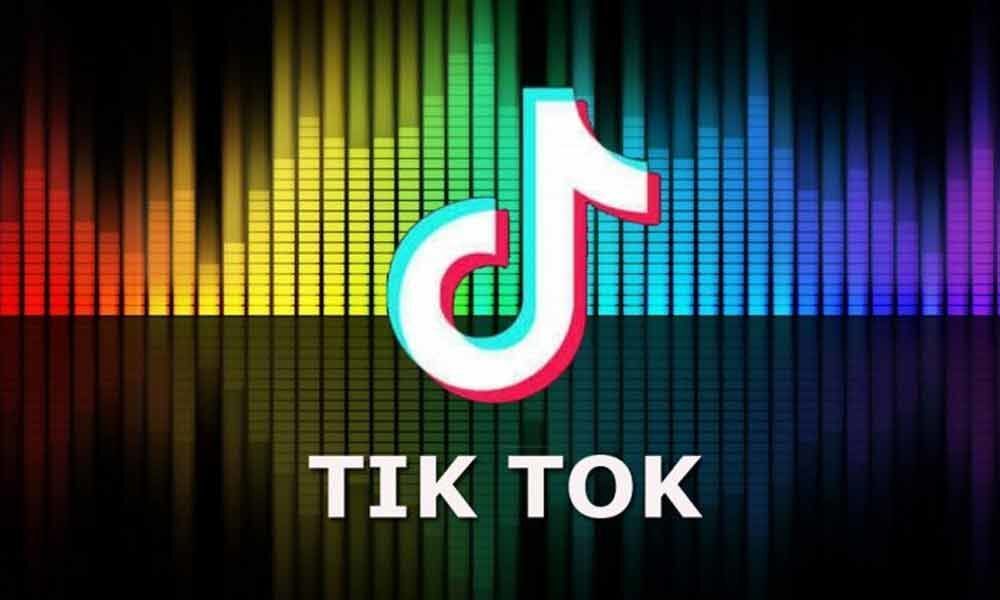Live
- GMR Airports Unveils AI-Powered Digital Twin Platform to Transform Airport Operations
- India poised to become leading maritime player: PM Modi
- Top Causes of Kidney Stones and How to Recognize Silent Symptoms
- India’s renewable energy capacity logs 14.2 pc growth at 213.7 GW
- Winter Session of Odisha Assembly adjourned sine die
- Biden calls Trump's tariff approach 'major mistake'
- After Drama Over Eknath Shinde’s Chief Minister Race, Maharashtra Cabinet Formation Faces New Tensions
- Egyptian FM, Blinken discuss recent developments in Syria
- Iran's supreme leader says Syria's developments result of US-Israeli 'plot'
- Elon Musk to Purchase $100 Million Luxury Mansion Next to Donald Trump's Mar-a-Lago, Report Reveals
Just In

The rise of the Chinese short video-sharing app TikTok in India has been so spectacular over the past year that it is now nearly impossible for any social media user to not have come across its content.
New Delhi, April 14: The rise of the Chinese short video-sharing app TikTok in India has been so spectacular over the past year that it is now nearly impossible for any social media user to not have come across its content.
These user-created videos that often contain memes, lip-syncing songs and sometimes sleazy posts regularly find ways to other popular social media sites including Facebook, WhatsApp and ShareChat. These are the platforms where most adult social media users are now getting introduced to TikTok.
For the young generation though, especially the teenagers and even younger kids, the app needs no introduction.
In fact, according to a new report from mobile app intelligence firm Sensor Tower, out of the 18.8 crore new users that TikTok added globally in the first quarter of 2019, 8.86 crore were from India.
Globally, TikTok has far crossed 1.1 billion installs and in the first quarter of 2019, it emerged as the third most installed app in the world, ranking behind only Facebook's WhatsApp and Messenger at No. 1 and No. 2, respectively, the analysis showed.
But how do you explain the dramatic rise of this app owned by Chinese tech company ByteDance?
"The rise of TikTok (formerly Musical.ly), highlights where the future of the Internet in India is: video," leading tech policy and media consultant Prasanto K. Roy told IANS.
"Of the 500 million smartphone and mobile broadband users in India, well over 300 million consume predominantly or only video. And as we get the next 200 million online by 2020, the video-only share will rise to over 70 per cent," he added, indicating the potential for further growth of video sharing apps in the country.
So far, the big drivers of Internet adoption in India have been WhatsApp, Messenger and Facebook, with additional help from shopping and taxi apps, and some streaming services such as Hotstar.
"No other app before Musical.ly/Tik Tok really went to a video-only, and especially an interactive video platform. For instance, its 'react' feature lets users to film their reaction to a video and its 'duet' feature allows users to film a video aside another video," Roy added.
Another reason for its growth is that the app allows people to express themselves even if they do not have the gift of the gab. So anyone who feel a little ostracized in platforms such as Facebook and Twitter may find solace on TikTok.
"TikTok caters to those who feel left out on other primarily-text platforms, either because of literacy or language inadequacy," Roy pointed out.
However, the growth of TikTok has not been without its share of controversies.
Hearing a petition filed by an advocate, the Madras High Court earlier this month asked the Centre to ban the app, saying it "encourages pornography" and is spoiling the future of youths and the minds of children.
TikTok on Friday said as part of its commitment towards providing a positive in-app environment for its users in India, it had removed over six million videos that have violated its "Community Guidelines".
TikTok also said it has stopped allowing users below 13 years to login and create an account on the platform.
"Unfortunately, social media has been an unsafe space and a platform like this (TikTok) which draws children in, and therefore possible predators, needs to be used with care," Roy said.

© 2024 Hyderabad Media House Limited/The Hans India. All rights reserved. Powered by hocalwire.com







